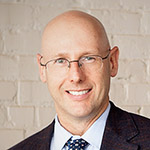Generally speaking, Virginia criminal defendants who want to challenge their convictions have only a few options. None of them are very good. They have 30 days from the date of their conviction to appeal to the Virginia Court of Appeals. The Court of Appeals reverses about 5% of all the criminal convictions it reviews and it reviews only a tiny fraction of the cases decided in Virginia’s trial courts. Defendants who lose in the Court of Appeals have another 30 days to appeal to the Supreme Court of Virginia. Their odds there are much worse.
After these direct appeals, Virginia’s state courts offered, historically, only very little hope for defendants seeking to mount a post-conviction challenge to their convictions. That changed a little in 2001. For crimes punishable by up to life in prison, a narrow window opened for convicts who claimed to be actually innocent of their crimes to challenge their convictions. The “actual innocence” writ petitions are rare and even more rarely are they granted.
This month, though, Winston Scott won one. How he did it is interesting both for the mechanics of his challenge and as some insight into how the Virginia Supreme Court goes about the work of reviewing these claims.
Scott was convicted in 1975 of raping a woman named JD. JD didn’t know her assailant or get a good look at him, had never met Scott, and only observed him in a very dark room while she was, for obvious reasons, “shocked and very frightened.” JD didn’t identify Scott in the first photo array she saw of him, but she did in the second one. In short, all the vulnerabilities of eye witness testimony were on abundant display: a poor opportunity to observe, observational skill impaired by trauma, unfamiliarity with the assailant, and suggestive and repetitive police photo arrays. At trial, JD identified Scott as the man who raped her.
At trial, Scott put on evidence of an alibi defense. The alibi, apart from JD’s eyewitness identification, was unimpeached. Scott also introduced forensic evidence that tended, as well as 1975 science might, to rule him out as the assailant. Although no forensic evidence linked Scott to the crime, the Commonwealth argued that Scott’s forensic evidence was inconclusive. A jury found Scott guilty and sentenced him to fourteen years in prison.
After repeated attempts to set aside his conviction, finally, in 2017, new forensic testing of semen stains on JD’s clothing eliminated both Scott and JD’s boyfriend at the time as contributors of the biological evidence. Also in 2017, JD explained that she identified Scott in the second photo array because, “I knew that … one of the photos in the lineup was probably the person …. I knew that they had somebody that they, you know, had some suspicions about and that I presumed that one of the photos was of that person.”
The Supreme Court closely examined the forensic evidence. The Court first concluded that one of Scott’s expert witnesses was permitted to testify even though she was not a Division of Forensic Science employee. That was because the Division conducted the testing on which Scott relied in his petition. Scott’s own expert didn’t re-do any testing but merely gave her opinion about what DFS’s testing meant. Then the Court concluded, over the Commonwealth’s objection, that the evidence excluding Scott as a contributor to the semen stain in question was indeed relevant to whether he was innocent of the rape for which he was convicted.
Only after an exhaustive review of the evidence and the challenges to Scott’s evidence of his innocence did the Virginia Supreme Court finally agree that Scott’s conviction could be set aside. The Court emphasized that Scott had to prove by clear and convincing evidence that “no trier of fact would have found proof beyond a reasonable doubt.”
Almost forty-four years after he was arrested, the Virginia Supreme Court has declared Winston Scott, in the only real manner permitted by Virginia law, the functional equivalent of “innocent.” Whether justice that long delayed is also justice denied is a question Scott, no doubt, must ask himself from time to time. To some extent, the rule of law must mean a fair and expeditious exoneration of the wrongly accused. The forensic science that Scott mustered in his challenge, coupled with investigators’ extraordinary research to find aging, even ancient, exculpatory accounts, helped him thread the narrow needle’s eye of an “actual innocence” claim. One might hold up Scott’s experience as a road map for other wrongly accused convicts. By the same token, for most defendants, Scott’s experience is a cautionary tale. Almost no one will be able to follow in his footsteps outside the shadow of a wrongful conviction.
Click here for more articles on Supreme Court of Virginia opinions.
